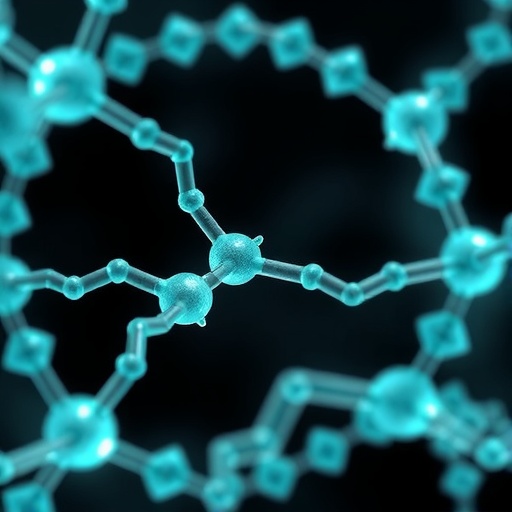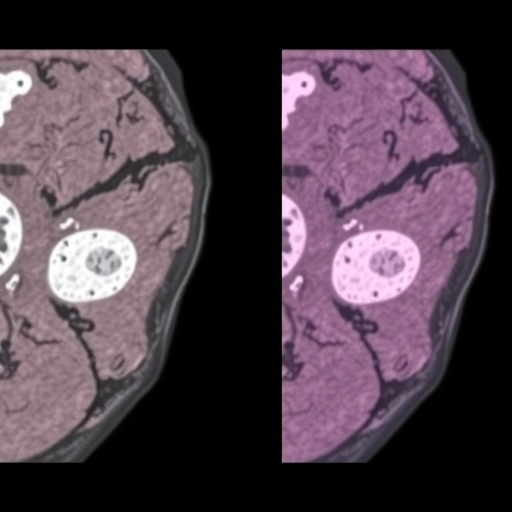In a breakthrough study published in Nature Metabolism, researchers unveil the critical role of the enzyme NUDT5 in regulating nucleotide synthesis and its unexpected influence on cancer cell sensitivity to nucleobase analogue therapies. This discovery opens new avenues for understanding drug resistance mechanisms in cancer treatment and presents intriguing possibilities for therapeutic intervention.
Nucleotide metabolism lies at the heart of cellular function, fueling DNA and RNA synthesis essential for cell proliferation and survival. The complex interplay of enzymes that govern nucleotide pools has long been a subject of intense investigation. Now, Strefeler and colleagues have shed light on the underappreciated contribution of NUDT5, an enzyme traditionally linked to metabolite homeostasis, in modulating the availability of phosphoribosyl pyrophosphate (PRPP), a pivotal substrate for nucleotide biosynthesis.
The study begins by exploring how deletion of the NUDT5 gene influences nucleotide balance within cells. Using cutting-edge metabolomic profiling in engineered knockout (KO) cell lines, the team detected a striking perturbation in intracellular PRPP levels. Given PRPP’s central role as a donor of ribose-phosphate groups in the salvage and de novo synthesis pathways of nucleotides, such disruption has profound implications for nucleotide metabolism dynamics and cellular fitness.
Delving deeper, the authors investigated the functional consequences of disrupted nucleotide pools on the efficacy of nucleobase analogues—therapeutic agents structurally mimicking natural bases that require activation through PRPP-dependent pathways. These agents, widely used in chemotherapy, rely on cellular metabolic processes to be converted into cytotoxic nucleotides. Interestingly, cells deficient in NUDT5 demonstrated a remarkable resistance to 5-fluorouracil (5-FU), a cornerstone pyrimidine analogue in cancer therapy, exhibiting an order of magnitude higher IC50 compared to wild-type controls.
This resistance appears intimately linked to the metabolic activation routes of these drugs. 5-FU requires phosphorylation and conversion steps ultimately dependent on PRPP availability, predominantly mediated by enzymes like thymidine phosphorylase (TYMP) and uridine monophosphate synthetase (UMPS). In contrast, analogues such as 5-fluorouridine, a nucleoside form bypassing PRPP requirement, retained unaltered efficacy in NUDT5 knockout cells. This differential sensitivity underscores the specificity of NUDT5’s impact on PRPP-dependent metabolism.
Expanding the scope, the research team tested an array of clinically relevant purine and pyrimidine analogues. Consistently, nucleobase analogues that depend on PRPP activation manifested reduced cytotoxicity in NUDT5-deficient cells, irrespective of their purine or pyrimidine nature. Conversely, sensitivity to nucleotide and nucleoside analogues, which bypass PRPP-utilizing activation mechanisms, remained unaffected. These results suggest a broad and specific modulatory role for NUDT5 in nucleobase analogue metabolism and therapeutic response.
Unexpectedly, these findings offer a mechanistic explanation to previously ambiguous observations from high-throughput genetic screens that implicated NUDT5 in resistance to the purine analogue 6-thioguanine, though detailed pathways were not elucidated. By bridging metabolomic data with functional resistance profiles, this work provides a coherent framework linking NUDT5 activity to chemotherapeutic susceptibility patterns.
The researchers further validated their findings using data from the Cancer Cell Line Encyclopedia (CCLE), confirming that the relationship between NUDT5 expression and nucleobase analogue resistance transcends specific cell lines and may represent a generalizable phenomenon in diverse cancer types. Such consistency accentuates the potential clinical relevance, raising the prospect that NUDT5 expression or activity could serve as a predictive biomarker for chemotherapy outcomes.
At a mechanistic level, the authors propose that NUDT5 modulates cellular PRPP pools by controlling fluxes in nucleotide degradation and salvage pathways, thereby fine-tuning the intracellular nucleotide landscape. This regulatory role situates NUDT5 as a critical enzyme at the crossroads of metabolism and drug response, influencing both nucleotide availability and the biotransformation efficiency of nucleobase analogues.
Intriguingly, the modulation of PRPP pools by NUDT5 may also impact broader metabolic processes beyond nucleotide synthesis. Since PRPP is a substrate shared by multiple biosynthetic pathways, including NAD+ and histidine synthesis, the enzyme’s activity potentially orchestrates complex metabolic cross-talk, a hypothesis inviting further exploration.
Moreover, the differential sensitivity of nucleobase versus nucleoside analogues to NUDT5 status suggests that therapeutic strategies modifying PRPP metabolism could be exploited to overcome drug resistance. For example, combining nucleobase analogues with agents that restore or mimic NUDT5 function might sensitize resistant tumors, enhancing chemotherapy efficacy.
This work also raises important questions regarding metabolic plasticity in cancer. The ability of cancer cells to adapt nucleotide biosynthesis routes and circumvent metabolic bottlenecks, such as those imposed by reduced NUDT5 function, illustrates the dynamic nature of metabolic rewiring in tumor evolution and therapy resistance.
From a translational perspective, targeting NUDT5 or its downstream metabolic effects emerges as a compelling avenue. Small molecule modulators of NUDT5 could either potentiate nucleobase analogue activation in resistant tumors or mitigate toxicities in normal tissues by adjusting nucleotide pools—a dual therapeutic potential that warrants rapid preclinical investigation.
Furthermore, these findings might inspire the design of novel nucleobase analogues structurally engineered to bypass PRPP dependence, offering alternative therapies for patients harboring metabolic adaptations impeding conventional nucleobase analogue activation.
On a broader scale, this study exemplifies the power of integrating metabolomic screening with functional genomics to decode complex resistance mechanisms, underscoring the necessity of multi-disciplinary approaches in modern cancer research.
The discovery of NUDT5’s role in PRPP regulation and nucleobase analogue sensitivity opens a new chapter in our understanding of nucleotide metabolism in oncogenesis and treatment response. As clinicians grapple with chemoresistance, insights like these pave the way for precision medicine strategies that tailor therapy based on tumor metabolic profiles.
In conclusion, Strefeler et al. deliver a compelling narrative linking metabolic enzyme function to chemotherapy resistance, highlighting NUDT5 as a pivotal regulator of nucleotide metabolism and a potential target for enhancing cancer treatment outcomes. Their work promises to catalyze further investigations into metabolic modifiers of drug sensitivity and heralds a new paradigm in the rational design of cancer therapeutics.
Subject of Research: Regulation of nucleotide synthesis and chemotherapeutic resistance mediated by NUDT5 enzyme activity.
Article Title: Uridine-sensitized screening identifies demethoxy-coenzyme Q and NUDT5 as regulators of nucleotide synthesis.
Article References:
Strefeler, A., Baker, Z.N., Chollet, S. et al. Uridine-sensitized screening identifies demethoxy-coenzyme Q and NUDT5 as regulators of nucleotide synthesis. Nat Metab (2025). https://doi.org/10.1038/s42255-025-01419-2
Image Credits: AI Generated
DOI: https://doi.org/10.1038/s42255-025-01419-2
Tags: cancer cell sensitivitydrug resistance mechanismsengineered knockout cell linesintracellular PRPP levelsmetabolomic profiling techniquesnucleobase analogue therapiesnucleotide metabolism dynamicsnucleotide synthesis regulationNUDT5 enzyme rolephosphoribosyl pyrophosphate importancetherapeutic intervention possibilitiesUridine screening





